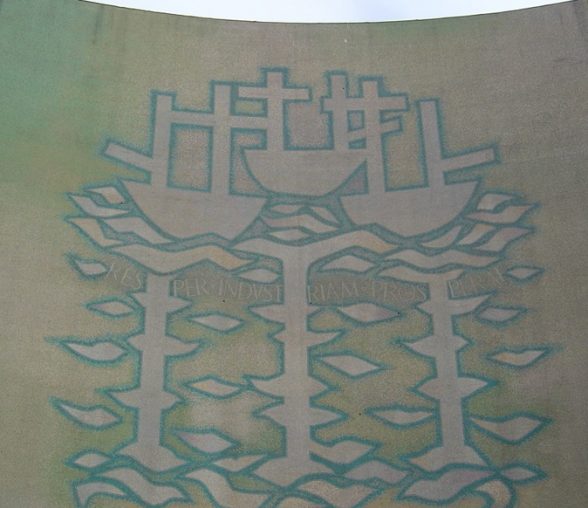This website uses cookies
This website uses cookies to enable it to function properly and to analyse how the website is used. Please click 'Close' to accept and continue using the website.



We are delighted with the news that the Three Ships mural in Hull has been given a last minute reprieve following the successful appeal of our rejected listing application.The Secretary of State has ruled that the mural by Alan Boyson, which contains over one million tiny cubes of Italian glass, is of special architectural and historic interest and should be listed at Grade II along with the curved concrete screen on which it sits.
The Three Ships adorns the front of the former Co-op building, most recently a BHS store, which is due to be demolished as part of a multi-million pound mixed use redevelopment scheme. Hull City Council had originally expressed its intention to relocate the mural, but abandoned these plans following the discovery of what it described as dangerously high levels of asbestos throughout the building.
C20 Society Caseworker Grace Etherington said: “This is fantastic news. We were doubtful that demolition of the mural was the only option, particularly as asbestos is so well understood and its removal is commonplace nowadays. We hope the decision provokes a change of heart from the council, who now have to reconsider options to retain and restore the mural as part of the wider redevelopment scheme.”
At the time of its installation in 1963, it was believed to be the biggest mural in Britain. Sitting above the store entrance and overlooking a large pedestrianized area in the town centre, the mosaic is 66ft high and 64ft wide (20m by 19.5m).
A smaller Fish Mural by Boyson was commissioned to sit inside on the building’s fourth floor. The ceramic work depicts fish swimming in a tiled background of bubbling water, set between massive columns of kelp-like fronds in stone. This has not been listed and its future is still uncertain.
DCMS praised the Three Ships as a work of an influential figure in post-war public art with a strong graphic quality, celebrating Hull’s historic fishing industry. The mural serves as an important record of the reconstruction of the city after the war, and the listing review team said it is a good example of the integration between art and architecture to enhance the public realm in post-war Britain.
The success and prominence of this case is owed to the tireless efforts of local campaigners and extensive further research from ceramic experts that supported the appeal case.

Become a C20 member today and help save our modern design heritage.